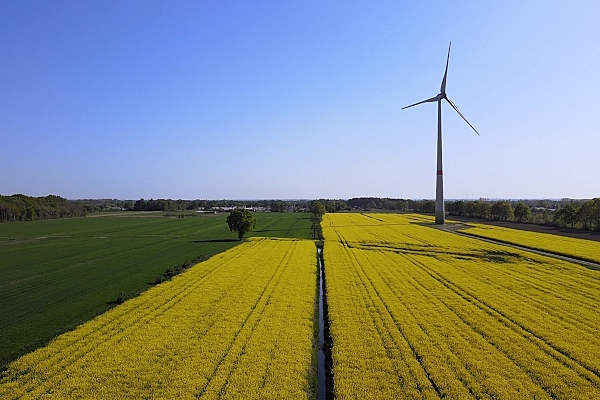After receiving the necessary documents and project presentation, our team will try to review your request as soon as possible, and leading experts will offer the best options for project funding.
Sustainable energy is the principle that human use of energy meets the needs of the present without compromising the ability of future generations to meet their own needs.
Sustainable energy development strategies are usually based on renewable energy production technologies and energy conservation methods.
Today, global investments in the renewable energy sector means developing sources such as solar, wind, geothermal, biomass and tidal energy.
Despite numerous technical, financial and regulatory barriers,, renewable energy costs have declined significantly in recent years.
The rapid development of technology and highly-effective government policies are increasingly supporting investor confidence, and green energy markets are expanding around the world. Significant progress has been made in the transition of industrial consumers from fossil fuels to environmentally sustainable systems, to the point that many plants and factories use 100% renewable energy.
It is expected that project finance instruments, leasing and long-term bank loans will be increasingly used to finance these innovations in the coming decades.
Our company is at the forefront of investing in renewable energy projects, offering large clients around the world flexible financial models and customized investment solutions tailored to the needs of a particular business.
Contact our representatives for more information.
Current situation and opportunities for investing in renewable energy
Investing in renewable energy sources is becoming more attractive than ever before.The rapid development of technology, the reduction in the cost of green energy, along with the skyrocketing of fossil fuel prices in Europe and the world, has led to the fact that some current investments in solar power plants and wind farms can pay for themselves completely within 1-2 years.
Previously, payback periods for such projects could exceed 10 years due to low electricity prices.
This situation has developed in the United Kingdom, Germany and a number of other countries due to a sharp increase in natural gas prices.
Despite previous doubts, experts are now talking about a bright future of the RES sector.
By the end of 2022, Rystad Energy predicts the total amount of investment in this sector to almost half a trillion dollars. This will be the first year in history that RES funding will exceed the oil and gas industry ($446 billion). It seems that Russia's aggression in Ukraine has pushed the traditional O&G industry into the abyss, and now the long-term focus of large energy companies has finally shifted towards green energy.
Table: Share of renewable energy sources in total generation of some countries (2021).
| COUNTRY | RES % | COUNTRY | RES % |
| Iceland | 86.87% | Croatia | 28.27% |
| Norway | 71.56% | Peru | 27.74% |
| Sweden | 50.92% | Chile | 26.52% |
| Brazil | 46.22% | Latvia | 23.92% |
| New Zealand | 40.22% | Vietnam | 22.73% |
| Denmark | 39.25% | Spain | 22.34% |
| Austria | 37.48% | Sri Lanka | 21.40% |
| Switzerland | 36.72% | Germany | 19.45% |
| Finland | 34.61% | Greece | 19.39% |
| Colombia | 33.02% | Slovenia | 18.77% |
| Portugal | 32.70% | Italy | 18.36% |
| Ecuador | 32.35% | United Kingdom | 17.95% |
| Canada | 29.89% | Romania | 17.48% |
| Venezuela | 28.43% | Turkey | 16.52% |
The recovery of the economy in the near future should take place along the lines of green transformation, so new investments in renewable energy projects will occupy an important place in the energy sector.
From now on, the gradual abandonment of fossil fuels has become a strategic goal not only for the countries of Europe, but also for East Asia, North Africa, the Middle East, and Latin America.
Financing the construction of wind farms, large-scale solar power plants, geothermal facilities, biomass thermal power plants, as well as the accelerated development of the green hydrogen and innovative energy storage technologies will form the foundation for sustainable growth of the world economy in the coming decade.
Our team is already building the future by providing long-term investment loans and helping customers around the world finance capital-intensive renewable energy facilities using advanced project finance tools.
Investments in solar energy
In the 1980s and early 1990s, most photovoltaic modules provided power to remote areas, but since 1995, investment has increasingly focused on the development of large integrated photovoltaic systems.Today, solar power plants are the world's largest source of renewable energy, and investment in solar energy production and storage is growing at a furious pace, outpacing other areas.
Solar power generation grew by 23% in 2021 on the back of rising fossil fuel prices. Global investment in solar power plants exceeded $120 billion in the first 6 months of 2022.
The undisputed leaders in this industry were China, the USA and Japan, which together allocated more than $50 billion for solar energy.
Wind energy sector
Wind power has become so accessible and cheap today that wind farms can easily compete with thermal power plants without government support.Especially attractive are large offshore projects that generate the cheapest electricity on an industrial scale, such as Hornsea 2 in the United Kingdom (165 wind turbines, 1.3 GW of installed capacity).
At the end of 2008, the installed capacity of wind farms worldwide was 120.8 GW, representing 1.3% of global electricity consumption. According to GWEC, this figure reached 837 GW in 2021, with a clear upward trend. Global investments in the wind energy sector have steadily crossed one and a half hundred billion dollars a year since 2019. China, the US, Japan and India top the list of countries providing the most funding for wind farm construction.
This source of energy is becoming increasingly attractive not only for investors, but also for governments seeking to ensure energy security and move away from natural gas.
European countries invested $43 billion in wind farms in 2021, adding another 25 GW of installed capacity across the EU.

Sustainable hydropower investments
Global investment in hydropower has greatly contributed to industrial growth in previous decades, as large hydropower plants allow electricity to be generated on an industrial scale based on simple engineering solutions.Giant hydroelectric power plants built throughout the 20th century in the USA, USSR, China, Brazil and Canada illustrate the history of the "golden age" of hydropower sector.
Among renewable energy sources, hydroelectric power plants are very durable. Many of the existing stations have been in operation for more than 100 years, undergoing regular upgrades. In addition, hydropower plants are environmentally friendly and have low emissions. The "retribution" for these advantages is the huge scale of construction work and high construction costs, as well as limited choice of locations for the construction of large hydropower plants.
The hydropower sector had 1360 GW of installed capacity in 2021, demonstrating a slight increase of a couple of tens of gigawatts annually.
Given the reduction in the choice of construction sites, there are fewer and fewer large projects, but on the other hand, small hydropower is attracting more interest from investors around the world.
Investments in geothermal energy
Investments in geothermal energy make up a relatively small share of total renewable energy funding, since this energy source requires unique environmental conditions and complex engineering solutions, especially when it comes to using deep wells.Geothermal energy production is currently carried out in more than 70 countries, with most consumers using geothermal heating for residential and industrial buildings.
In 2021, the total installed geothermal capacity in the world was just over 16 GW, with the prospect of an average annual growth of 5% in the next decade. The USA, Philippines, Indonesia, Turkey and New Zealand are considered leaders in investments in geothermal power plants, but a number of countries in Northern Europe are also actively developing this area against the background of rising prices for hydrocarbons.
Geothermal energy is considered a sustainable and renewable source of energy because the heat extraction is small compared to the heat content of the Earth. Greenhouse gas emissions from geothermal power plants average 45 grams of carbon dioxide per kilowatt-hour of electricity, or less than 5% compared to conventional coal-fired power plants.
According to experts, geothermal energy can cover up to 5% of global demand for electricity and heat by 2050. With adequate funding and technical innovation, 10% of global demand could be met by 2100.
Biomass energy
Biomass is one of the most flexible fuels, which is produced by fermentation or combustion.Biomethane is obtained both from waste and residues of crop production and animal husbandry. Such alternative energy sources can be used in the electrical network or heating network, both for the needs of the enterprise and for domestic consumption.
Biomass briquettes are used in developing countries as an alternative to charcoal. This controversive method involves converting almost any plant material into compressed briquettes, which typically have about 70% of the heating value of charcoal.
There are few examples of the construction of large thermal power plants powered by biomass briquettes, with the exception of some countries in Africa, Asia and Latin America.
Combined thermal power plants (CHP) burn solid organic materials, such as wood waste, to produce thermal energy. Biomass CHP facilities generate electrical energy along with thermal energy, and waste heat can be used to replace traditional types of energy.
Overall, this is an underestimated area of renewable energy. In 2020, global investment in biomass energy barely exceeded $10 billion, which is very modest compared to the growing renewable energy sector.
If you need financing for a renewable energy project, please contact us at any convenient time.




























